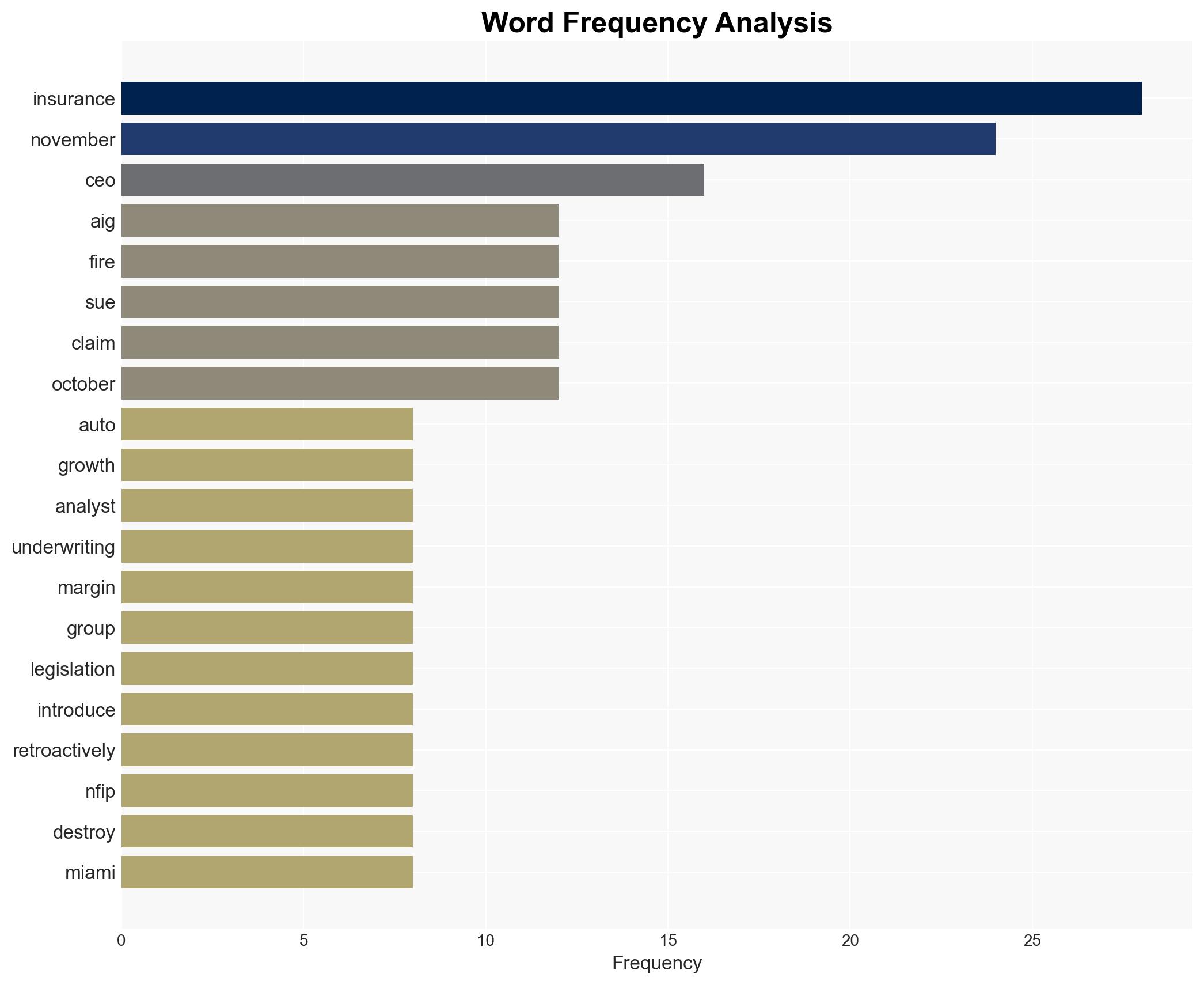NTSB to Decide Probable Cause of Baltimores Key Bridge Collapse Next Week – Insurance Journal
Published on: 2025-11-14
AI-powered OSINT brief from verified open sources. Automated NLP signal extraction with human verification. See our Methodology and Why WorldWideWatchers.
Intelligence Report: NTSB to Decide Probable Cause of Baltimore’s Key Bridge Collapse Next Week – Insurance Journal
1. BLUF (Bottom Line Up Front)
The most supported hypothesis is that the Baltimore Key Bridge collapse was due to structural failure exacerbated by maintenance lapses. Confidence level is moderate due to limited direct evidence and potential biases in reporting. Recommended action includes advocating for comprehensive infrastructure audits and increased investment in maintenance to prevent similar incidents.
2. Competing Hypotheses
Hypothesis 1: The collapse was primarily due to structural failure caused by aging infrastructure and insufficient maintenance.
Hypothesis 2: The collapse was the result of external factors such as a cyberattack or sabotage.
Hypothesis 1 is more likely given historical precedents of infrastructure failures due to maintenance issues and the absence of credible evidence pointing to external interference. However, the possibility of external factors cannot be entirely ruled out without further investigation.
3. Key Assumptions and Red Flags
Assumptions: It is assumed that the NTSB will conduct a thorough and unbiased investigation. There is also an assumption that current infrastructure maintenance practices are inadequate.
Red Flags: Potential bias in reporting and the lack of detailed information on the bridge’s maintenance history could skew analysis. The absence of immediate claims of responsibility for sabotage or cyberattack reduces the likelihood of Hypothesis 2 but does not eliminate it.
4. Implications and Strategic Risks
The collapse could lead to increased scrutiny on national infrastructure, potentially resulting in political and economic pressure to increase funding for maintenance. Failure to address these issues could result in further incidents, leading to public distrust and economic repercussions. Additionally, if external interference is confirmed, it could escalate into a broader security concern.
5. Recommendations and Outlook
- Conduct comprehensive infrastructure audits to identify and prioritize maintenance needs.
- Increase funding and resources for infrastructure maintenance and upgrades.
- Develop contingency plans for rapid response to similar incidents to mitigate impact.
- Best-case scenario: The investigation leads to improved infrastructure policies and practices, preventing future incidents.
- Worst-case scenario: Failure to address underlying issues results in repeated infrastructure failures and potential loss of life.
- Most-likely scenario: Incremental improvements in infrastructure maintenance, with continued risk of isolated incidents.
6. Key Individuals and Entities
NTSB (National Transportation Safety Board) – responsible for the investigation.
John Neal – CEO of Lloyd’s of London, mentioned in the context of insurance implications.
7. Thematic Tags
Cybersecurity, Infrastructure, Maintenance, Risk Management
Structured Analytic Techniques Applied
- Adversarial Threat Simulation: Model and simulate actions of cyber adversaries to anticipate vulnerabilities and improve resilience.
- Indicators Development: Detect and monitor behavioral or technical anomalies across systems for early threat detection.
- Bayesian Scenario Modeling: Quantify uncertainty and predict cyberattack pathways using probabilistic inference.
Explore more:
Cybersecurity Briefs ·
Daily Summary ·
Support us
·





